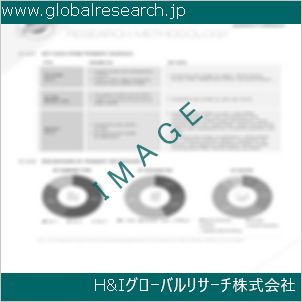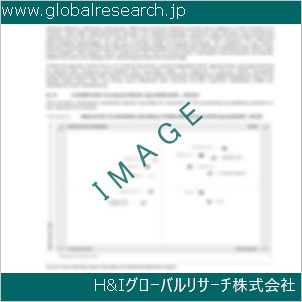Table of Contents
1 Industry Overview of Diketene
1.1 Definition and Specifications of Diketene
1.1.1 Definition of Diketene
1.1.2 Specifications of Diketene
1.2 Classification of Diketene
1.3 Applications of Diketene
1.3.1 Nuclear Application
1.3.2 Non-Nuclear Application
1.4 Industry Chain Structure of Diketene
1.5 Industry Overview and Major Regions Status of Diketene
1.5.1 Industry Overview of Diketene
1.5.2 Global Major Regions Status of Diketene
1.6 Industry Policy Analysis of Diketene
1.7 Industry News Analysis of Diketene
2 Manufacturing Cost Structure Analysis of Diketene
2.1 Raw Material Suppliers and Price Analysis of Diketene
2.2 Equipment Suppliers and Price Analysis of Diketene
2.3 Labor Cost Analysis of Diketene
2.4 Other Costs Analysis of Diketene
2.5 Manufacturing Cost Structure Analysis of Diketene
2.6 Manufacturing Process Analysis of Diketene
3 Technical Data and Manufacturing Plants Analysis of Diketene
3.1 Capacity and Commercial Production Date of Global Diketene Major Manufacturers in 2023
3.2 Manufacturing Plants Distribution of Global Diketene Major Manufacturers in 2023
3.3 R&D Status and Technology Source of Global Diketene Major Manufacturers in 2023
3.4 Raw Materials Sources Analysis of Global Diketene Major Manufacturers in 2023
4 Capacity, Production and Revenue Analysis of Diketene by Regions, Types and Manufacturers
4.1 Global Capacity, Production and Revenue of Diketene by Regions 2019-2024
4.2 Global and Major Regions Capacity, Production, Revenue and Growth Rate of Diketene 2019-2024
4.3 Global Capacity, Production and Revenue of Diketene by Types 2019-2024
4.4 Global Capacity, Production and Revenue of Diketene by Manufacturers 2019-2024
5 Price, Cost, Gross and Gross Margin Analysis of Diketene by Regions, Types and Manufacturers
5.1 Price, Cost, Gross and Gross Margin Analysis of Diketene by Regions 2019-2024
5.2 Price, Cost, Gross and Gross Margin Analysis of Diketene by Types 2019-2024
5.3 Price, Cost, Gross and Gross Margin Analysis of Diketene by Manufacturers 2019-2024
6 Consumption Volume, Consumption Value and Sale Price Analysis of Diketene by Regions, Types and Applications
6.1 Global Consumption Volume and Consumption Value of Diketene by Regions 2019-2024
6.2 Global and Major Regions Consumption Volume, Consumption Value and Growth Rate of Diketene 2019-2024
6.3 Global Consumption Volume and Consumption Value of Diketene by Types 2019-2024
6.4 Global Consumption Volume and Consumption Value of Diketene by Applications 2019-2024
6.5 Sale Price of Diketene by Regions 2019-2024
6.6 Sale Price of Diketene by Types 2019-2024
6.7 Sale Price of Diketene by Applications 2019-2024
6.8 Market Share Analysis of Diketene by Different Sale Price Levels
7 Supply, Import, Export and Consumption Analysis of Diketene
7.1 Supply, Consumption and Gap of Diketene 2019-2024
7.2 Global Capacity, Production, Price, Cost, Revenue, Supply, Import, Export and Consumption of Diketene 2019-2024
7.3 USA Capacity, Production, Price, Cost, Revenue, Supply, Import, Export and Consumption of Diketene 2019-2024
7.4 EU Capacity, Production, Price, Cost, Revenue, Supply, Import, Export and Consumption of Diketene 2019-2024
7.5 China Capacity, Production, Price, Cost, Revenue, Supply, Import, Export and Consumption of Diketene 2019-2024
7.6 Japan Capacity, Production, Price, Cost, Revenue, Supply, Import, Export and Consumption of Diketene 2019-2024
8 Major Manufacturers Analysis of Diketene
8.1 Manufacturer One
8.1.1 Company Profile
8.1.2 Product Picture and Specifications
8.1.2.1 Type I
8.1.2.2 Type II
8.1.2.3 Type III
8.1.3 Capacity, Production, Price, Cost, Gross and Revenue
8.1.4 Contact Information
8.2 Manufacturer Two
8.2.1 Company Profile
8.2.2 Product Picture and Specifications
8.2.2.1 Type I
8.2.2.2 Type II
8.2.2.3 Type III
8.2.3 Capacity, Production, Price, Cost, Gross and Revenue
8.2.4 Contact Information
8.3 Manufacturer Three
8.3.1 Company Profile
8.3.2 Product Picture and Specifications
8.3.2.1 Type I
8.3.2.2 Type II
8.3.2.3 Type III
8.3.3 Capacity, Production, Price, Cost, Gross and Revenue
8.3.4 Contact Information
8.4 Manufacturer Four
8.4.1 Company Profile
8.4.2 Product Picture and Specifications
8.4.2.1 Type I
8.4.2.2 Type II
8.4.2.3 Type III
8.4.3 Capacity, Production, Price, Cost, Gross and Revenue
8.4.4 Contact Information
8.5 Manufacturer Five
8.5.1 Company Profile
8.5.2 Product Picture and Specifications
8.5.2.1 Type I
8.5.2.2 Type II
8.5.2.3 Type III
8.5.3 Capacity, Production, Price, Cost, Gross and Revenue
8.5.4 Contact Information
…
9 Marketing Trader or Distributor Analysis of Diketene
9.1 Marketing Channels Status of Diketene
9.2 Traders or Distributors with Contact Information of Diketene by Regions
9.3 Ex-work Price, Channel Price and End Buyer Price Analysis of Diketene
9.4 Regional Import, Export and Trade Analysis of Diketene
10 Industry Chain Analysis of Diketene
10.1 Upstream Major Raw Materials Suppliers Analysis of Diketene
10.1.1 Major Raw Materials Suppliers with Contact Information Analysis of Diketene
10.1.2 Major Raw Materials Suppliers with Supply Volume Analysis of Diketene by Regions
10.2 Upstream Major Equipment Suppliers Analysis of Diketene
10.2.1 Major Equipment Suppliers with Contact Information Analysis of Diketene
10.2.2 Major Equipment Suppliers with Product Pictures Analysis of Diketene by Regions
10.3 Downstream Major Consumers Analysis of Diketene
10.3.1 Major Consumers with Contact Information Analysis of Diketene
10.3.2 Major Consumers with Consumption Volume Analysis of Diketene by Regions
10.4 Supply Chain Relationship Analysis of Diketene
11 Development Trend of Analysis of Diketene
11.1 Capacity, Production and Revenue Forecast of Diketene by Regions and Types
11.1.1 Global Capacity, Production and Revenue of Diketene by Regions 2024-2029
11.1.2 Global and Major Regions Capacity, Production, Revenue and Growth Rate of Diketene 2024-2029
11.1.3 Global Capacity, Production and Revenue of Diketene by Types 2024-2029
11.2 Consumption Volume and Consumption Value Forecast of Diketene by Regions, Types and Applications
11.2.1 Global Consumption Volume and Consumption Value of Diketene by Regions 2024-2029
11.2.2 Global and Major Regions Consumption Volume, Consumption Value and Growth Rate of Diketene 2024-2029
11.2.3 Global Consumption Volume and Consumption Value of Diketene by Types 2024-2029
11.2.4 Global Consumption Volume and Consumption Value of Diketene by Applications 2024-2029
11.3 Supply, Import, Export and Consumption Forecast of Diketene
11.3.1 Supply, Consumption and Gap of Diketene 2024-2029
11.3.2 Global Capacity, Production, Price, Cost, Revenue, Supply, Import, Export and Consumption of Diketene 2024-2029
11.3.3 USA Capacity, Production, Price, Cost, Revenue, Supply, Import, Export and Consumption of Diketene 2024-2029
11.3.4 EU Capacity, Production, Price, Cost, Revenue, Supply, Import, Export and Consumption of Diketene 2024-2029
11.3.5 China Capacity, Production, Price, Cost, Revenue, Supply, Import, Export and Consumption of Diketene 2024-2029
11.3.6 Japan Capacity, Production, Price, Cost, Revenue, Supply, Import, Export and Consumption of Diketene 2024-2029
12 New Project Investment Feasibility Analysis of Diketene
12.1 New Project SWOT Analysis of Diketene
12.2 New Project Investment Feasibility Analysis of Diketene
13 Conclusion of the Global Diketene (CAS 674-82-8) Industry 2024 Market Research Report
| ※参考情報 ジケテン(Diketene)は化学式 C4H6O2 を有し、CAS番号674-82-8で示される有機化合物です。この化合物は二重結合を持つエステルの一種で、特にそのユニークな構造により、さまざまな化学反応において重要な役割を果たします。ジケテンは、アセチル化合物やカルボン酸と反応することで、多様な化合物を生成することができるため、合成化学の分野で広く利用されています。 ジケテンは、無色の液体であり、特有の香りを持つため、取り扱いには注意が必要です。その揮発性と反応性の高さから、適切な保存環境が求められます。通常、冷暗所に保管されることが推奨されており、酸素や水分と反応しやすい性質を持つため、密閉容器に保存することが望ましいです。 ジケテンの特徴の一つは、その反応性の高さです。特に、いくつかのカルボニル化合物やアミンと反応することで、エステルやアミドを簡便に合成することが可能です。この特性は、ジケテンが有機合成において非常に重要な中間体として機能することを意味しています。特に、医薬品や農薬、染料の合成において、ジケテンが十分に利用されています。 また、ジケテンは「アセトアセト酸エステル」としても知られる化合物と反応し、さまざまな環状化合物を形成することができます。これにより、ジケテンは有機合成において環状化合物の生成にも寄与しています。 用途の面においては、ジケテンは多様な産業で利用されています。特に、製薬業界や農薬産業での重要性が高まっています。具体的には、抗生物質や抗ウイルス薬の合成において、ジケテンを基にした化学反応によって新しい化合物が設計され、製造されています。また、農薬分野でも、ジケテンを起点にした分子設計が行われており、特定の病害虫に対して高い効果を持つ防除剤の開発に寄与しています。 さらに、ジケテンは科学研究の分野でも活用されています。例えば、反応メカニズムの解明や新しい化学反応の発見において、ジケテンを用いた実験が行われています。このような研究は、基礎科学の発展だけでなく、応用科学や産業技術の革新にもつながる可能性があります。 別の観点から見ると、ジケテンの合成技術も重要な分野です。ジケテンの合成は、一般にアセチル酢酸から高温の条件下で行うことができる一方で、他の手法として、カルボン酸とアミンを原料とした反応によっても生成可能です。これにより、ジケテンの生産方法は多様性を持ち、さまざまな条件下での合成が可能となっています。 また、ジケテンの反応性は、分子の設計によって調整が可能です。これにより、新たな機能性材料や高性能ポリマーの開発に向けた研究が進められています。ジケテンを利用したポリマー合成は、特に材料科学やナノテクノロジーの分野で注目されています。 他の関連技術としては、ジケテンを用いた触媒反応の研究もあります。特定の触媒を用いることで、ジケテンの反応速度や選択性を向上させる試みが行われており、これにより新しい反応経路を開発することが期待されています。触媒技術の向上は、ジケテンを使用した合成法の効率性を高め、コストの削減や環境への負荷軽減に寄与する可能性があります。 ジケテンの応用は拡大しており、特に持続可能な化学プロセスに向けた研究が進行中です。グリーンケミストリーの観点から、ジケテンを用いた合成法は、環境に優しい反応条件の下で行われることが増えています。これにより、有害な副生成物の生成を抑制し、持続可能な素材や化合物の生産が可能となります。 ジケテンはその多様な応用と反応性から、今後も新しい研究の重要な対象となると考えられます。化学産業の革新や新規材料の開発のための鍵として、ジケテンがどのように利用されるかは、今後の化学と関連産業の進展に大きく寄与するでしょう。特に、環境への配慮や持続可能性が求められる現代社会において、ジケテンを基にした新しい技術や製品の開発が期待されます。 |
❖ 免責事項 ❖
http://www.globalresearch.jp/disclaimer












